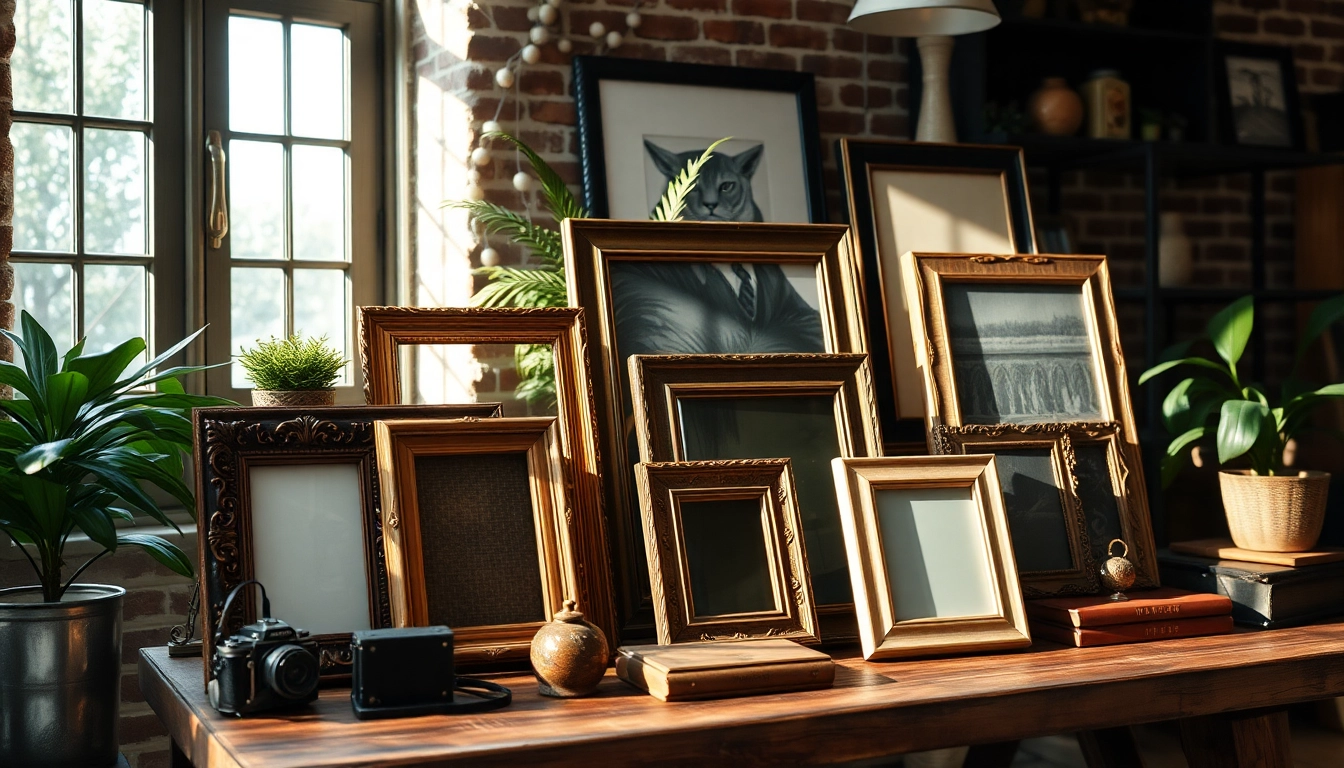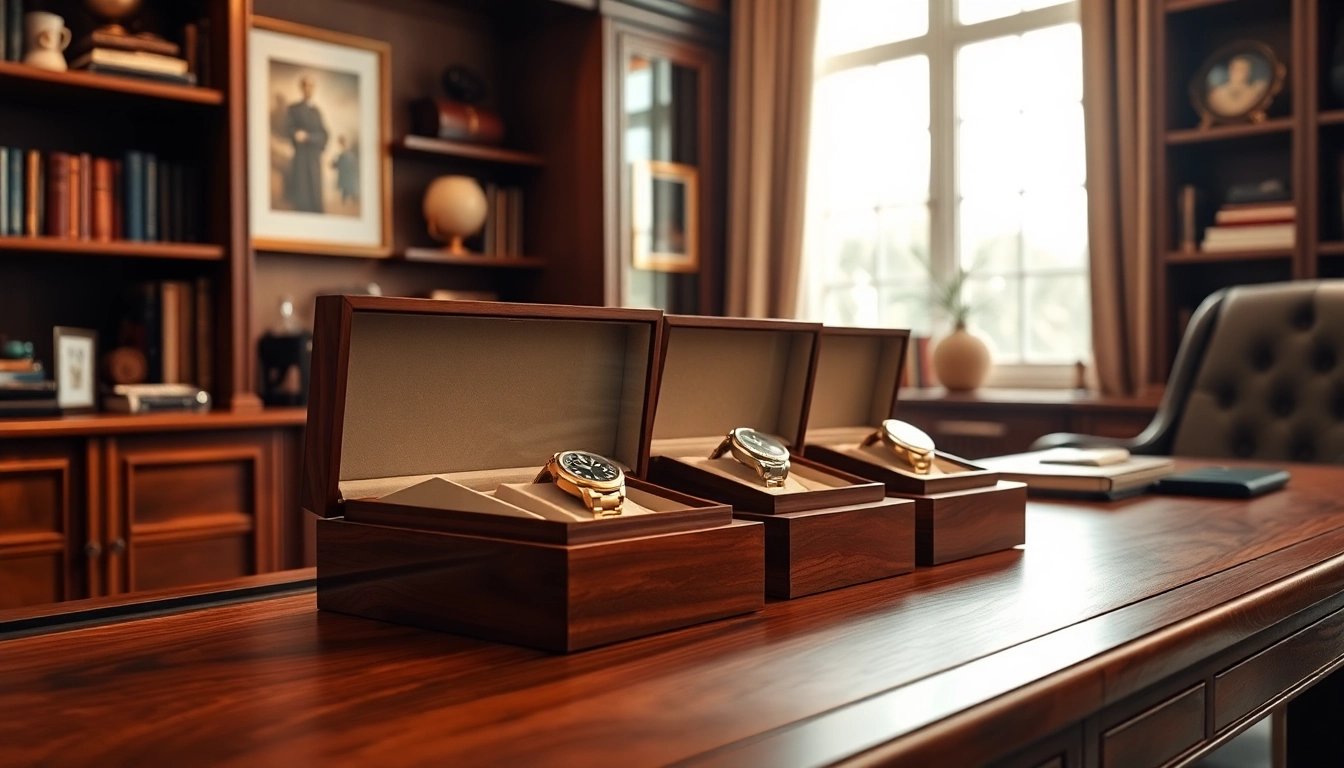Introduction to Vintage Frames
When searching for a way to add character to your living space, vintage frames stand out as a versatile choice. These frames are not just decorative elements; they encompass history, evoke nostalgia, and serve as a bridge between the past and the present. Whether you are an avid collector or someone looking to enhance your home décor, the charm of vintage frames can elevate your environment in unexpected ways.
What Are Vintage Frames?
Vintage frames are typically defined as picture frames that are at least 20 years old, often showcasing unique materials, designs, and craftsmanship that reflect the period they are from. From ornate baroque styles to sleek mid-century modern lines, these frames carry distinct characteristics that make them appealing for both aesthetic and sentimental reasons. They are often associated with a particular era or artistic movement, thus adding a historical context to the art or photographs they display.
Historical Significance of Vintage Frames
The history of picture framing is as rich as art itself. Frames have been used for centuries, initially serving to protect artwork but evolving into decorative objects in their own right. During the Renaissance, for instance, frames became extravagant works of art, often gilded and elaborately designed. By the 19th and 20th centuries, various artistic movements influenced frame styles. The Arts and Crafts Movement emphasized handmade craftsmanship, while Art Deco introduced geometric and streamlined designs. Understanding the historical context of these frames not only enriches the aesthetic value but also enhances the stories behind them.
Why Choose Vintage Frames for Your Decor?
Incorporating vintage frames into your décor can provide a blend of charm and personality that modern frames may lack. Vintage frames can create a compelling dialogue between the artwork and the environment, ensuring that each room feels curated and lived in. Furthermore, the sustainability aspect of choosing second-hand or antique items attracts individuals seeking to minimize waste and embrace eco-friendly practices in their home design.
Types of Vintage Frames
Wooden Vintage Frames: Characteristics and Benefits
Wooden vintage frames are among the most common types found, known for their durability and timeless appeal. They can vary widely in style, from the intricately carved frames of the Baroque period to the simpler designs of the mid-century. The benefits of wooden frames include their ability to blend seamlessly with various décor styles—be it rustic, traditional, or contemporary. Additionally, wood can be easily customized, allowing for painting or staining to match specific color schemes.
Metal and Art Deco Vintage Frames
Metal frames often represent the Industrial Revolution’s impact on design, with Art Deco styles becoming particularly popular in the 1920s and 1930s. Characterized by bold lines, geometric shapes, and sometimes intricate details, these frames are perfect for adding a touch of glamour to any space. Metal frames are not only stylish but also sturdy, providing excellent protection for artwork while highlighting the piece itself. Their versatility allows them to complement both modern and vintage artworks.
Unique Vintage Frame Styles Across Decades
Each decade has its distinctive style, and understanding these can aid in selecting the right vintage frames for your collection. For instance, the 1920s brought about the ornate details of Art Deco, while the 1950s introduced sleek, minimalist frames that introduced a fresh aesthetic to homes. The eclectic nature of the 1970s allowed for colorful and bold designs, often made from a mixture of materials. Identifying these styles not only assists in curating a cohesive collection but also helps in setting a theme for displays within various rooms.
How to Incorporate Vintage Frames into Your Home
Best Rooms for Vintage Frame Displays
When incorporating vintage frames into your home, it’s essential to consider where they will have the most impact. Living rooms and dining areas are often the go-to places for art displays, but vintage frames can also enhance the character of bedrooms, hallways, and even bathrooms. For instance, a gallery wall featuring a mix of framed family photographs and vintage art can create a warm and inviting focal point in a living room. Meanwhile, an arrangement of smaller frames in a bathroom can add a touch of elegance and charm.
Combining Vintage Frames with Modern Decor
One common misconception is that vintage frames can clash with modern decor. In reality, vintage can accentuate and add warmth to sleek, contemporary environments. For example, a modern white space can benefit from the contrast of a gilded Baroque frame displaying abstract art. This combination highlights the modernity of the space while embracing the history and stories that vintage pieces bring. Consider mixing styles, textures, and colors to achieve a layered look that feels sophisticated and personalized.
Tips for Hanging and Arranging Frames Effectively
When it comes to displaying vintage frames, proper arrangement is key to creating visual interest. Here are some tips to consider:
- Layout Planning: Before hanging frames, lay them out on the floor to visualize your arrangement. Try different configurations to find the most aesthetically pleasing design.
- Eye Level Placement: Aim to hang the center of your artwork at eye level for maximum impact, typically around 57 to 60 inches from the floor.
- Spacing: Avoid cluttering your arrangement. A distance of 2-4 inches between frames creates balance and allows each piece to shine.
- Mixing Sizes: Using frames of various sizes can create depth and intrigue. Consider starting with a large central frame and building around it with smaller ones.
Caring for Your Vintage Frames
Cleaning and Maintenance Tips
Proper care is crucial to preserve the beauty and integrity of vintage frames. Dust frames regularly using a soft cloth to prevent dirt buildup. For deep cleaning, a gentle soap solution can be used, but always avoid harsh chemicals that may damage the finish. Pay attention to the glass—clean it with a glass cleaner or a vinegar-water solution to keep it crystal clear without streaks.
Repairing Minor Damages
Over time, vintage frames may experience minor damages such as scratches, chips, or loose corners. For wooden frames, matching wood filler can be used to repair scratches, while touch-up paint can conceal any imperfections. Metal frames may benefit from a rust-inhibiting paint if corrosion occurs. For glass, a simple replacement may be necessary if cracks form, as it can compromise the display. If the damage is extensive, consulting a professional restorer may be advisable to maintain the frame’s value.
Preserving Historical Value
If you own frames with historical significance, consider additional measures to preserve their condition. Store frames in a climate-controlled environment, away from direct sunlight, which can fade colors and weaken materials over time. When transporting frames, use protective materials to prevent scratches and breakage. Documentation of a frame’s provenance can also enhance its historical value, so keep any receipts, appraisals, or restoration records safe.
Where to Buy Vintage Frames
Top Online Stores for Vintage Frame Shopping
The digital age has made vintage frame shopping more accessible than ever. Numerous online platforms offer a wide range of vintage frames. Websites like Etsy, eBay, and Chairish often feature authentic, one-of-a-kind pieces from various eras. Specialty shops that focus on antique and vintage items online can also be excellent resources for unique finds. Ensure reputable sellers provide detailed descriptions and photographs to verify authenticity before making a purchase.
Local Antique Shops and Flea Markets
For those who prefer the thrill of the hunt, local antique shops and flea markets can be treasure troves for vintage frames. These venues allow you to see items in person, inspecting their condition and construction quality. Plus, bargaining is often encouraged in flea markets. Don’t hesitate to ask about the history of frames; sellers can provide insights that enhance your appreciation and understanding of the pieces.
Identifying Authentic Vintage Frames
Identifying authentic vintage frames can sometimes be challenging, especially with the prevalence of reproductions. Look for signs of age, such as wear on the surfaces, fading of finishes, or changes in the materials used. Authentic pieces often have unique craftsmanship details—notice any irregularities that indicate handmade quality. Additionally, researching frame makers can provide context around specific styles and help in verifying authenticity. Consulting with experts or appraisers can also ensure that your investment is genuine.


